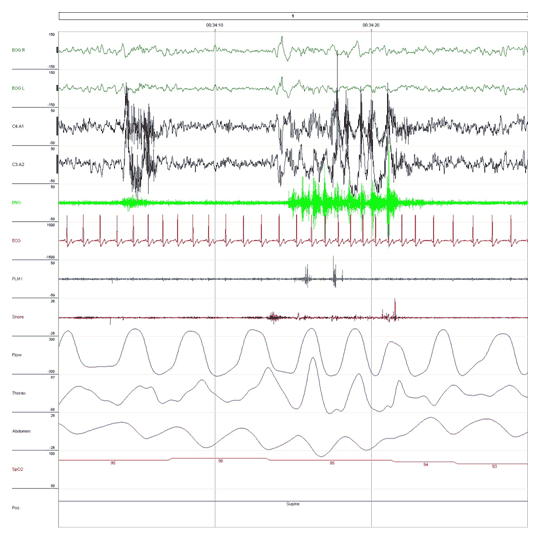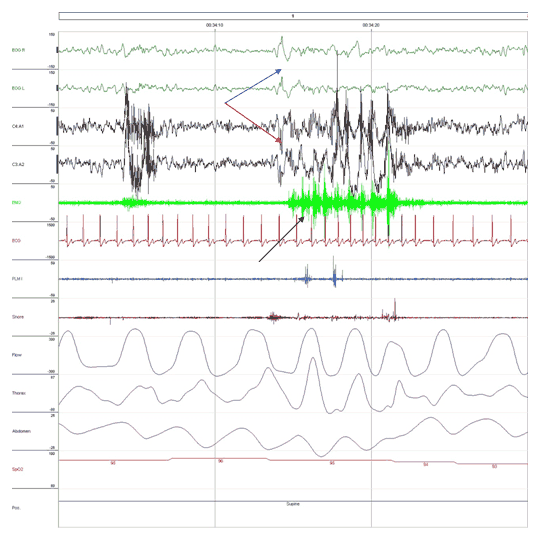Contributed by Jay Jaye and Mary Morrell, PhD
Bruxism or teeth grinding.
- This fragment shows 30 seconds of sleep during which sleep-related bruxism has been scored (black arrow).
- During bruxism the chin EMG typically shows a phasic activity at approximately 1 Hz frequency lasting 0.25-2 seconds. The amplitude of the EMG change should be compared to the bio-calibration of jaw clenching at the start of the record (not shown in this fragment).
- Here the diagnosis is complicated by the fact that bruxism typically causes EMG artifact on the EEG channels, especially if they are referred to the mastoid. Although this record does show artifact on the EEG channels (red arrow), it is not clearly shown on the EOG channels (blue arrow), which are also referred to the mastoid.
- On this occasion the diagnosis of bruxism was confirmed with the aid of video and sound recording.
- The AASM diagnostic and coding manual (2005) defines sleep-related bruxism as stereotyped movements characterised by grinding or clenching of the teeth during sleep, usually associated with arousal from sleep.
- Bruxism can occur across a wide range of ages but is most common in children/adolescence.
- Diagnosis is based on history, and dental examination. NPSG is not needed for the diagnosis but may be needed to rule out other movement and behavioral disorders.
- Bruxism causes abnormal wear of teeth, dental / jaw pain and temporal headaches. It may also disturb the partner as the grinding sound can be very loud.
- Treatment usually consists of a mouth guard to prevent dental damage.
Reference: American Academy of Sleep Medicin, The International Classification of Sleep Disorders, 2005, pages 189-191.





